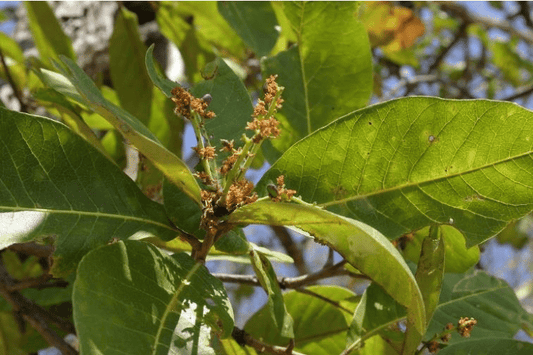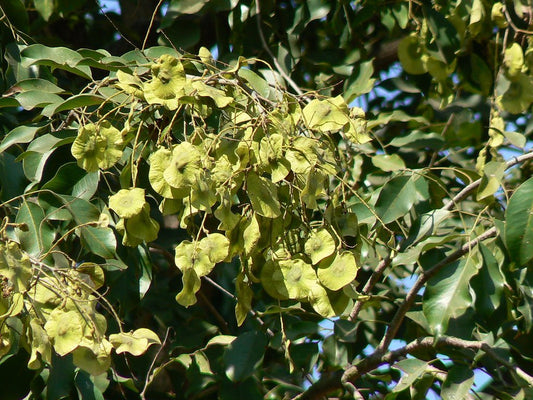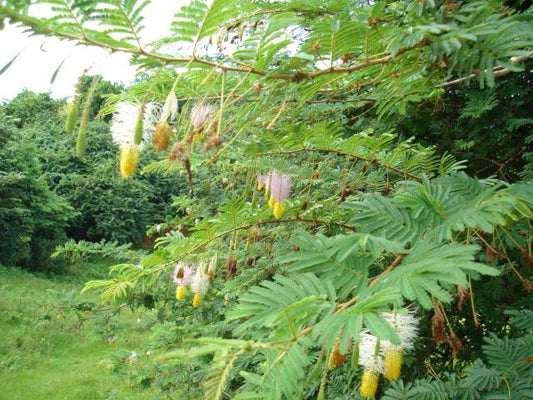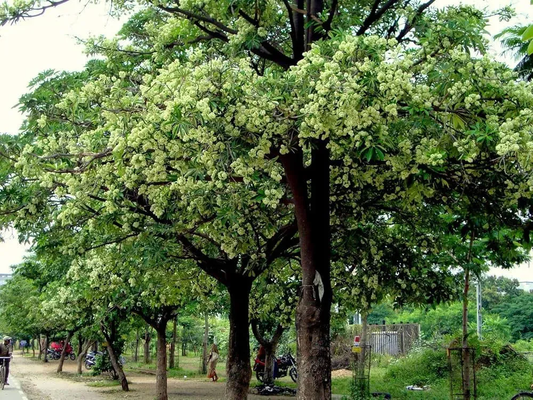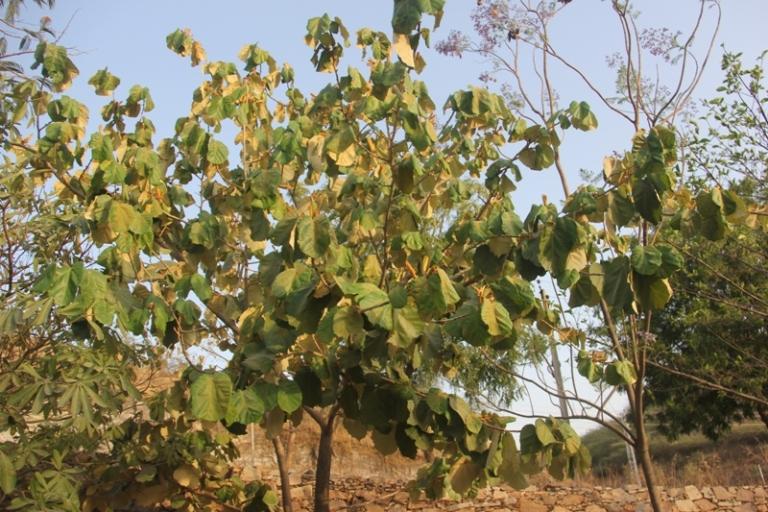

The Muchkand Tree, scientifically known as Pterospermum acerifolium, is a unique species that blends beauty, utility, and ecological significance. Revered for its large, fragrant flowers and versatile medicinal properties, this tree has played a vita Read more
Muchkand Tree: Discovering the Timeless Beauty and Hidden Wonders of N
The Muchkand Tree, scientifically known as Pterospermum acerifolium, is a unique species that blends beauty, utility, and ecological significance.
Revered for its large, fragrant flowers and versatile medicinal properties, this tree has played a vital role in traditional practices and environmental conservation.
Known by various names like Kanak Champa in India, the Muchkand Tree is a lesser-known marvel waiting to be explored. Let’s dive into its fascinating history, ecological impact, and untapped potential.
What is the Muchkand Tree?
The Muchkand Tree belongs to the family Malvaceae and is native to South and Southeast Asia. This deciduous tree can grow up to 20 meters tall, with a broad canopy and large, maple-like leaves.
Its striking, fragrant flowers bloom at night, making it a visual and sensory delight in any landscape.
Historical and Cultural Significance
The Muchkand Tree holds a special place in Indian traditions. Its flowers have been used in religious rituals, while its leaves have served practical purposes like wrapping and packaging.
Ancient Ayurvedic texts describe its medicinal properties, particularly for treating wounds, respiratory issues, and skin ailments.
Fun Fact: The Muchkand Tree is often referred to as “Kanak Champa,” symbolizing gold, due to the vibrant appearance of its flowers under moonlight.
Medicinal Properties of the Muchkand Tree
For centuries, the Muchkand Tree has been used in traditional medicine for its therapeutic benefits. Its flowers, bark, and leaves are rich in bioactive compounds such as flavonoids and tannins.
- Respiratory Health: The tree’s flowers are known to relieve coughs, colds, and asthma symptoms.
- Skin Care: Its bark and leaves are used to treat wounds, rashes, and other skin ailments.
- Anti-inflammatory: The tree’s extracts help reduce swelling and joint pain, offering natural relief for arthritis.
- Digestive Support: Its roots are used in traditional remedies to alleviate constipation and bloating.
Scientific Backing
Studies published in the Journal of Ethnopharmacology highlight the Muchkand Tree’s antimicrobial and anti-inflammatory properties. Research also indicates its potential in skincare and respiratory treatments, validating its traditional uses.
Environmental Impact
The Muchkand Tree is not just a medicinal marvel; it’s also an environmental gem. Its large leaves and wide canopy provide shade, reduce soil erosion, and support biodiversity.
The tree plays a significant role in improving air quality by absorbing carbon dioxide and releasing oxygen.
- Soil Stabilization: Its roots prevent erosion, particularly in areas prone to heavy rainfall.
- Biodiversity Support: The tree provides shelter and food for various birds, insects, and small animals, fostering a balanced ecosystem.
- Carbon Sequestration: Like all trees, it helps combat climate change by storing carbon dioxide and releasing oxygen.
Fun Fact: The Muchkand Tree’s flowers bloom at night and fall to the ground by morning, creating a stunning carpet of blossoms.
Muchkand Tree in Landscaping
With its large leaves and striking flowers, the Muchkand Tree is a favorite among landscapers. It’s often planted in parks, gardens, and along avenues for its aesthetic appeal and shade-providing canopy.
The tree’s ability to thrive in diverse soil types makes it a low-maintenance yet impactful addition to any green space.
Planting and Caring for the Muchkand Tree
- Soil: Prefers well-drained, loamy soils but can adapt to sandy and clay soils as well.
- Sunlight: Thrives in full sunlight to partial shade, ensuring optimal growth and flowering.
- Watering: Requires regular watering during its early growth phase; once established, it becomes moderately drought-tolerant.
- Pruning: Regular pruning helps maintain its shape and encourages healthier growth.
Modern Uses and Applications
Beyond its traditional uses, the Muchkand Tree has found applications in modern industries. Its large leaves are used for eco-friendly packaging, while its wood is valued for its durability in furniture and construction.
The tree’s flowers are being explored for use in natural perfumes and skincare products.
Cultural Symbolism
The Muchkand Tree is often associated with tranquility and prosperity in Indian culture. Its night-blooming flowers are considered symbols of beauty and serenity, often featured in poetry and art. In some regions, the tree is planted near temples and homes as a sign of good fortune.
Conservation and Sustainability
While the Muchkand Tree is not currently endangered, habitat loss and urbanization pose threats to its natural population. Promoting its planting in urban and rural landscapes can help preserve its ecological and cultural value.
Encouraging its use in reforestation and sustainable landscaping projects ensures its benefits are enjoyed for generations.
Conclusion
The Muchkand Tree is a timeless treasure that embodies the best of nature’s beauty, utility, and resilience. From its medicinal properties to its environmental contributions, it serves as a reminder of the interconnectedness of health and sustainability.
Let’s celebrate and conserve this remarkable tree, ensuring its legacy continues to enrich ecosystems and communities worldwide.
You may also like
Corporate Plantations
Muchkand Tree Benefits
The Muchkand Tree offers everything from respiratory relief to skin healing, proving it’s a natural multitasker blending beauty and functionality for both health and the environment.
Medicinal Properties of Muchkand Tree
Packed with anti-inflammatory and antimicrobial compounds, this tree’s bark, leaves, and flowers treat wounds, joint pain, and respiratory issues, making it a green healer.
Muchkand Tree in Landscaping
With its large, night-blooming flowers and broad canopy, the Muchkand Tree is a landscaper’s dream, combining shade, beauty, and biodiversity in one stunning package.
Environmental Role of Muchkand Tree
From reducing soil erosion to supporting pollinators and birds, this tree proves it’s not just decorative but a vital piece of the ecological puzzle.
Muchkand Tree in Traditional Medicine
Revered in Ayurveda, the tree has been used for centuries to treat skin ailments, digestive problems, and respiratory conditions, proving ancient wisdom still holds.
Cultural Significance of Muchkand Tree
Known as Kanak Champa, this tree symbolizes beauty, prosperity, and tranquility, often featured in rituals, poetry, and as a lucky charm near temples.
Muchkand Tree in Modern Research
Scientists are exploring its flowers for natural skincare and perfumery, while its antimicrobial properties hold promise for pharmaceutical breakthroughs.
Conservation of Muchkand Tree
Threatened by urbanization, preserving this tree ensures its medicinal, environmental, and cultural treasures continue to benefit future generations.
FAQ
What is the Muchkand Tree?
The Muchkand Tree, scientifically known as Pterospermum acerifolium, is a deciduous tree celebrated for its night-blooming flowers, medicinal benefits, and environmental contributions.
Why is the Muchkand Tree called Kanak Champa?
The tree’s golden-hued flowers, which bloom at night and fall by morning, earned it the name Kanak Champa, symbolizing beauty and serenity.
What are the medicinal benefits of the Muchkand Tree?
From treating respiratory ailments and joint pain to healing wounds and skin issues, this tree is a natural pharmacy packed with therapeutic wonders.
How does the Muchkand Tree support biodiversity?
Its flowers attract pollinators, while its canopy provides shelter for birds and small animals, making it a crucial player in ecosystem balance.
Can the Muchkand Tree prevent soil erosion?
Yes, the tree’s robust roots stabilize soil, making it effective in areas prone to erosion and heavy rainfall, while also enriching the land.
What role does the Muchkand Tree play in landscaping?
With its large leaves, fragrant flowers, and shade-providing canopy, the tree is a favorite in parks, gardens, and avenues for both beauty and utility.
Why is the Muchkand Tree culturally significant?
Often associated with prosperity and tranquility, it is planted near temples and homes and features in Indian art and poetry as a symbol of peace.
Why should we conserve the Muchkand Tree?
Conservation ensures its medicinal, cultural, and environmental benefits are preserved, preventing the loss of this vital and versatile natural gem.
Connect with us
-
👥 Corporates
If you are looking for:
- 🌲 Tree Plantation Events
- 📊 CSR Projects
📧 corporate@growbilliontrees.com
📞 +91 9699723523
💬 +91 9370599291 WhatsApp (Only)
🕒 Mon - Sat | 10am - 7pm IST
-
🧩 Tree Plantation NGOs
If you are looking for:
- 💰 Financial Assistance
- 🤝 Operational Support
📧 support@growbilliontrees.com
📞 +91 9699723523
💬 +91 9370599291 WhatsApp (Only)
🕒 Mon - Sat | 10am - 7pm IST
-
🌼 Individuals
If you are looking for:
- 👥 Group Tree Plantation Drive
- 🌳 Bulk Tree Plantation
📞 +91 9699723523
💬 +91 9370599291 WhatsApp (Only)
🕒 Mon - Sat | 10am - 7pm IST


